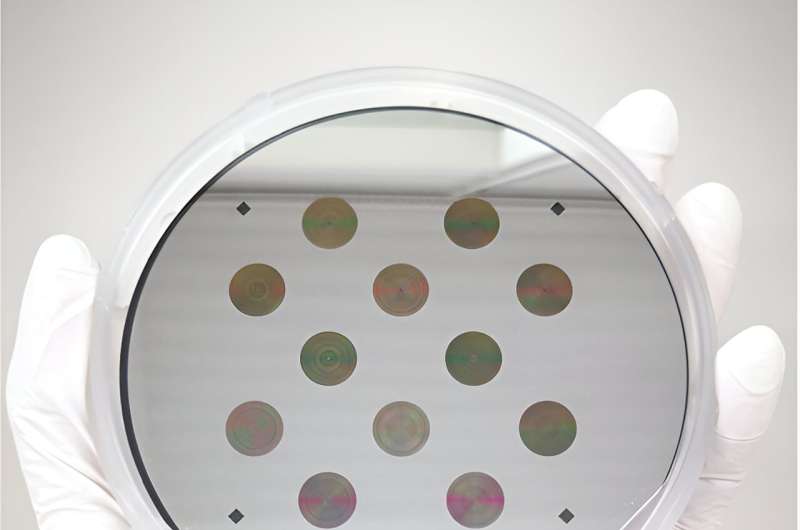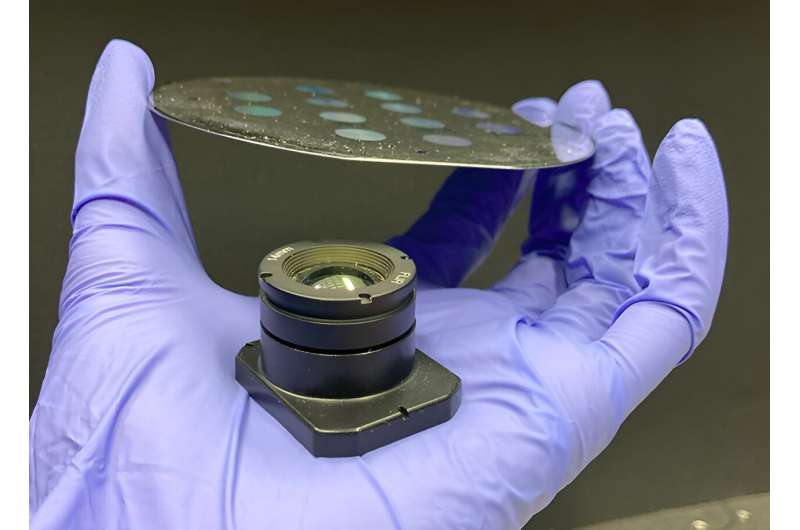Thermal imaging, a technology vital for a myriad of applications ranging from consumer electronics to national security, has long relied on conventional refractive lenses. However, these lenses, with their bulkiness and reliance on expensive materials, have posed limitations on the development of compact and efficient imaging systems. In a groundbreaking endeavor, researchers at the University of Washington Department of Electrical & Computer Engineering UW ECE have spearheaded a paradigm shift with the introduction of ultra-flat meta-optics for broadband thermal imaging.
Meta-optics, characterized by sub-wavelength diffractive structures, offer a revolutionary approach to optical design. By manipulating light at the nanoscale, meta-optics enable the creation of lightweight and compact imaging systems while maintaining exceptional image quality. In the realm of long-wavelength infrared (LWIR) imaging, where conventional lenses fall short, meta-optics hold immense promise for advancing thermal imaging technology.
The journey towards ultra-flat meta-optics for LWIR imaging began with the recognition of the limitations inherent in traditional refractive lenses. Bulky and costly, these lenses hindered the development of portable and affordable imaging systems essential for a wide range of applications. Meta-optics emerged as a solution, offering a path to overcome these challenges and unlock new possibilities in thermal imaging.
The research team, led by Associate Professor Arka Majumdar, embarked on a mission to harness the full potential of meta-optics for LWIR imaging. Leveraging an innovative inverse design framework termed “MTF-engineering,” the team revolutionized the optimization process for meta-optics. By integrating artificial intelligence and intuitive figure of merit criteria, they achieved breakthroughs in designing meta-optics capable of broadband thermal imaging with unparalleled efficiency.
Central to their approach was the development of a deep neural network model to expedite the mapping between pillar shape and phase—a critical step in the optimization of large-area meta-optics. This pioneering use of artificial intelligence allowed for rapid iterations and fine-tuning, paving the way for the creation of meta-optics with superior performance.
Moreover, the team’s intuitive figure of merit, rooted in the modulation transfer function (MTF), provided a holistic measure of optical performance. By optimizing the MTF to ensure uniform performance across wavelengths, the researchers achieved meta-optics capable of delivering high-quality thermal images consistently—a feat previously elusive with conventional lenses.
The fabrication of meta-optics from a single silicon wafer marked another milestone in the research journey. This approach not only simplified manufacturing but also offered a promising alternative to germanium-based LWIR imaging systems, addressing concerns about material scarcity and cost.
While acknowledging the need for further refinement to achieve imaging quality on par with commercial refractive lens systems, the research represents a significant leap forward in the realm of thermal imaging. By democratizing their MTF-engineering framework through platforms like GitHub, the researchers have paved the way for widespread adoption and collaboration in the field of meta-optics.
As the world enters a new era of technological innovation, the rise of ultra-flat meta-optics holds the promise of transforming thermal imaging across industries. From enhancing night vision capabilities to enabling compact consumer electronics, meta-optics are poised to redefine the boundaries of what is possible in the realm of LWIR imaging.
The journey towards ultra-flat meta-optics for broadband thermal imaging exemplifies the power of interdisciplinary collaboration and innovative thinking. With each breakthrough, researchers inch closer to realizing a future where lightweight, efficient, and affordable thermal imaging systems are accessible to all.

